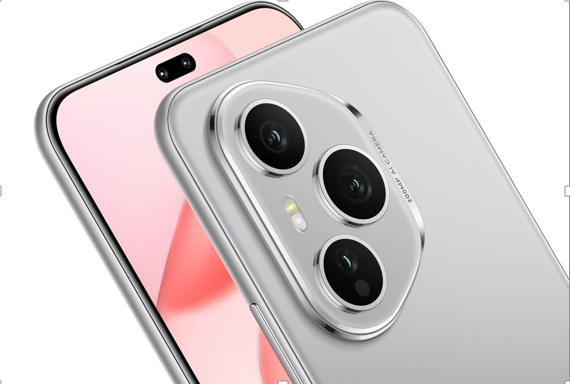How to Get the Most Out of Your Smartphone’s Camera?

Your smartphone’s camera can offer breathtaking photos when you know how to use its features. Learn how to maximize every photo opportunity by mastering simple features. You have control over the image quality, whether you tap to focus, adjust exposure, or switch between settings. You don’t need big equipment. You just need to grasp what your phone provides. With a few strategies, you can shoot clear landscapes, vibrant portraits, and thrilling events with clarity and style. This book leads you through settings, methods, and strategies that allow you to unlock the full potential of your phone camera and shoot like a pro.
Understanding Your Smartphone Camera Features
Exploring Camera Settings and Modes
Begin by studying your camera’s basic settings and modes. Tap settings to learn about choices such as portrait, panoramic, and night mode. You can easily swap between front and back lenses. You may adjust the flash, HDR, timing, and filters. You adjust the white balance to suit indoor or outdoor settings. You select a resolution or aspect ratio based on clarity or sharing requirements. You explore with gridlines in composition. These modest changes make a significant difference. You discover what each accomplishes by trying them out. You mount your phone, adjust one setting at a time, and observe how each adjustment affects your image.
What’s New in Smartphone Camera Technology?
You benefit from ongoing improvements in smartphone cameras. You can now purchase a variety of lenses—ultra-wide, telephoto, and macro—that allow you to customize your frame. You use computational photography to combine exposures for improved detail and color. You utilize AI-enhanced scene recognition to select ideal settings. You get better low-light performance with night mode, which illuminates gloomy scenes. You capture video at high frame rates or even in HDR formats. Built-in optical image stabilization ensures that images remain crisp even as you make hand movements. These new features expand your creative potential. When you update your phone’s firmware, you’ll have access to more advanced photography features.
See also: The Strategic Advantage: Compelling Reasons to Invest in Premium E-Procurement Technology
How to Use the Pro Mode for Advanced Control?
You may switch between Pro and Manual for total control. ISO adjusts sensor sensitivity, lowering noise during the day and increasing it in low-light conditions. Adjust the shutter speed to creatively freeze or blur motion. You change the white balance to improve lighting and color accuracy. To get exact sharpness, manually lock focus. Histograms help to avoid blown highlights and packed shadows. The meter is used to balance the brightness and darkness of the scene. Practice adjusting each parameter. You shot in RAW whenever feasible. Post-processing involves adding data and cleaning up photographs.

Tips for Capturing Stunning Photos
Importance of Lighting in Photography
You carefully position the subject, light, and yourself. Morning and sunset light provide delicate, warm tones. Move into the shade or use diffusers to lessen midday glare. Use backlight to create silhouettes or glittering halos. You utilize lighting, candles, and LED panels to add mood and depth. Light from a reflector or a white surface illuminates shadows. Before firing, you verify the light’s direction and strength. When there is a high contrast, you adjust the exposure or apply HDR. The HONOR 400 Pro allows you to alter camera settings for optimal lighting. Shadows compel you to shift concentration. Lighting is your primary weapon for improving images.
Composition Techniques for Better Shots
You frame your shot with intention. You apply the rule of thirds by arranging crucial items along grid lines or intersections. You use leading lines—roads, fences, and shadows—to bring the spectator into the scene. To modify your perspective, you can squat, climb, or lean. You tell a tale using foreground-to-background layers to provide depth. You remove distractions by cropping or changing your angle. To develop visually appealing images, you focus on symmetry and balance. You employ negative space to emphasize your subject. You create breathing space around your focus so that the eye does not feel cluttered. You modify scenes by moving yourself, not the topic.
Using Focus and Exposure to Enhance Images
Tap the screen to focus and lock on your topic. The exposure may be changed to brighten shadows or dim highlights. Focus on moving targets and then shift composition without losing clarity. To alter the brightness, use manual exposure in Pro mode. You can use spot, center, or multi-zone metering to control camera light assessment. You repeat frames with different exposures to get the best one. Most phones may be reset and adjusted with a double-tap. Shoot HDR with high contrast and allow the camera to blend exposures. You guarantee that your topic shines rather than fades or disappears.
How to Shoot Professional-Quality Videos with Your Phone?
Stabilization Tips for Smooth Footage
You stabilize your footage by holding your phone in both hands and tucking your elbows into your torso. You brace against walls or surfaces to prevent shaking. When traveling, you utilize a tiny tripod or a gimbal. To maintain smooth mobility, you walk heel-to-toe or with a steady pace. You enable built-in optical or electronic stabilization for more stable handheld shots. You pan gently, avoiding abrupt motions. You practice breathing out while in motion to keep your body calm. You frame first, followed by tilting or tracking. You practice your steps before recording. You study the replay and improve with each take.
Setting Up Your Camera for Cinematic Shots
You apply cinematic tactics with ease. Keep the exposure and focus fixed to avoid unexpected changes when shooting. You photograph landscapes for cinema. You employ dramatic framing, with broad views for the background and close-ups for emotion. Film humans with a consistent eye line and headroom. Portrait or wide lens cinematography employs a shallow depth-of-field. Instead of digital zoom, you use your feet to slow down or push in. You match frame rate and resolution for consistency—24 fps looks like a movie. Lead subjects across space to make motion meaningful. You use light and movement to guide the viewer’s gaze.
Editing Videos on Your Smartphone for a Polished Finish
Import clips into iMovie, CapCut, or InShot. You remove needless details and organize your story. Adjusting the brightness, contrast, and hue generates mood. You use cuts, dissolves, and fades to achieve a fluid flow. Titles, lower-thirds, and explanations are utilized as needed. To avoid drowning out conversation, you adjust audio levels and overlay background music. You use speed ramps or slow-motion to highlight specific moments. Export at your device’s highest resolution. Before sharing your changes, make sure they look good. Adjust the file size for internet platforms. You edit the film until every second is focused.
Conclusion
Learn how to get the most out of your smartphone’s photography. You learnt about features, Pro mode, lighting, and composition. You found a balance between focus and exposure to achieve clarity. You stabilized the footage, framed shots cinematically, and polished the content using editing tools. You have complete control over each stage, and even minor changes increase outcomes. Your photos and videos may now compete with traditional equipment. You investigate, evaluate, and enhance your method. Your creativity is driven by pocket tools, and the world is waiting for your vision.



